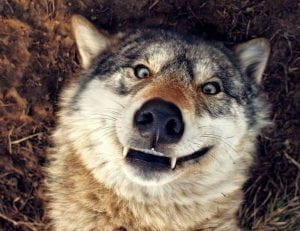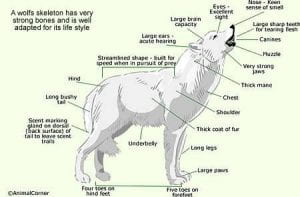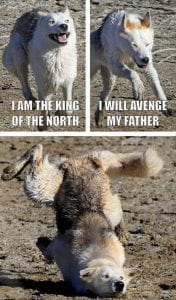They are one of the greatest hunters and they are the master of the forest. A canine looking beast, fierce and intelligent. They are the biggest in the dog family, and they are of course… (drumroll please…) Grey Wolves.
ANIMAL PROFILE
Grey wolves are the biggest member of the ‘dog family’. They are pack animals and always maintain a group stance. In the pack, there will be a ‘boss’, and the boss is called ‘alpha’, if anything happened, the alpha needs to go to the front, and if they need a new alpha the old alpha will fight who ever wants to be the next one to judge based on strength. And some times the alpha might be a female.

PHYSICAL APPEARANCE/ DIET/ DESCRIPTION OF ENVIRONMENT
They normally live in the forest and sometimes places that have snow, they eat rabbits, cows and animals similar to that. Because I know you know that wolves eats meat. ( ̄∇ ̄) Wolves have very thick fur coat to keep them warm. They also have long bushy tails to tell others their feelings like dogs does, if you likes dogs, you should already know that. They have long strong legs for them to walk a long distance. And when they are hunting, they can run very fast. When they are on the ice, if the ice cracked they can swim with their paws, and their fur coat can keep them warm enough. They sense of smell of and nose ability is excellent, they can smell things very well, like if they are lost, they can search for the smell of other wolves, and they can find their next prey to eat. They have super sharp claws for them to catch their prey and for eating. When they are chasing, they might use their claws to help them to scratch the animal so they might run slower. When they eat there will to prevent some type of problems that might hurt their teeth, they use their claws to help cut the meat or hold it tight.

PHYSIOLOGICAL ADAPTATION
Some of you don’t know what ‘physiological adaptation’ means. It refers to in the inside of the animal and the need to survive. Which is the blood, their bones, how they are made and what do those things do…. there’s a lot of examples. First, they are warm blooded, which maintain a constant body temperature, typically above that of the surroundings. Their sense of smell is 100 times greater than humans. Wolves have eyes that are very sensitive to movement during night time, so they can be on alert of what is going on around them when ever they are resting, or working. Their eyes are also have a reflective retina, which improves their night vision. At last, they have a simple stomach for storing food quicker.

BEHAVIOURAL ADAPTATION
Wolves always do weird things, like howling. They howl each night for a variety of reasons, like family bonding, hunting and communicating. Sometimes, it might be 2 wolves howling and maybe 10! Of course they eat a lot, so that they can be strong enough.
 Sorry, not this one…
Sorry, not this one…
SOURCES OF INFORMATION
This is where I find all of the information. 👇🏻
https://fuse.education.vic.gov.au/Primary
My best book of wolves & wild dogs
https://www.worldbookonline.com/wb/Login?ed=wb